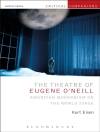Raúl Ruiz, while considered one of the world’s most significant filmmakers by several film critics, is yet to be the subject of any thorough engagement with his work in English. This volume sets out on this task by mapping, as fully as possible, Ruiz’s cinematic trajectory across more than five decades of prolific work, up to his death in 2011; ranging from his earliest work in Chile to high-budget ‘European’ costume dramas culminating in Mysteries of Lisbon (2010). It does so by treating Ruiz’s work—with its surrealist, magic realist, popular cultural, and neo-Baroque sources—as a type of ‘impossible’ cinematic cartography, mapping real, imaginary, and virtual spaces, and crossing between different cultural contexts, aesthetic strategies, and technical media. It argues that across the different phases of Ruiz’s work identified, there are key continuities such as the invention of singular cinematic images and the interrogation of their possible and impossible combinations.
İçerik tablosu
Acknowledgements
Introduction: A New Cartographer?
1. Ruiz’s Cinema in the 1960s and 1970s
2 The Cinema of Piracy, the Sea and Spectral Voyages: Ruiz’s Neo-Baroque Cinema of the 1980s
3 Cartographies of Complexity: Ruiz’s ‘French’ Cinema Since the Mid-1990s
Conclusion: Ruizian Cartography from Chile to the Cosmos via the Littoral, or The Film to Come
Appendix: Raúl Ruiz Interview (Paris, November, 2009)
Select Filmography
Bibliography
Index
Yazar hakkında
Michael Goddard is Senior Lecturer in Media Studies at the University of Salford, UK. His recent research centers on audiovisual media cultures and media theory; currently he is researching radical media ecologies in the 1970s.












